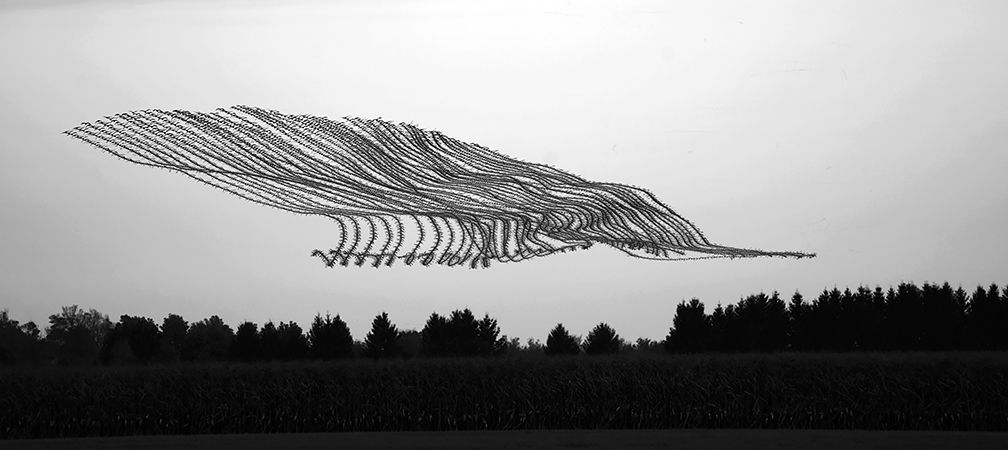Ontario Nature Blog
Receive email alerts about breaking conservation
and environmental news.
© Lora Denis
Abstract Bird Photography 11 © Raghuvamsh Chavali
Worldwide, nature lovers, ornithologists, and photographers are always fascinated by the world of avian flight. Birds’ varied and complex flying patterns have a remarkable power to awe. This article takes us on a trip to discover the unnoticed beauty of bird flight patterns.
I am interested in the artistic method of interlacing frames, which reveals the distinct flying patterns displayed by each species, rather than just the birds themselves. The technique of interlacing many frames is a precise and thorough method that forms the basis of this creative endeavor. This technique records several frames from a bird’s flight, which are subsequently stitched together to create a single, coherent picture.

The outcome is an aesthetically stunning depiction of a bird’s flight that provides insights into the subtleties and grace of its movement.
Beyond conventional still photography, interlacing frames provides a dynamic and comprehensive portrayal of a bird’s journey through the sky. By aligning and seamlessly blending these frames, a visual narrative of the bird’s flight is woven, emphasizing its grace, agility, and the distinctive patterns that emerge as it traverses the skies.

The initial step in the intricate process of interlacing frames is the meticulous selection of a mid-flight bird as the primary subject. This methodology unfolds in a series of phases. First, it begins with the vigilant observation and monitoring of the bird’s movements, demanding a combination of precision and patience to capture the entire flight sequence. Then, a multitude of frames is rapidly captured, employing fast shutter speeds to freeze the dynamic action and deliver sharp, detailed images. Additionally, the process incorporates the utilization of video and time-lapse techniques to comprehensively document the bird’s flight trajectory.
After capturing these multiple frames, careful alignment and blending of each frame follows, often accomplished using specialized image processing software like Adobe Photoshop and Lightroom. In the final stage, a discerning process of selective framing is undertaken to eliminate any shaky frames, resulting in a clear, crisp image that beautifully showcases the intricate details and grace of the bird’s flight path.

Before beginning the process of photographing the birds for framing, you should spend considerable time choosing the angle, background, and ideal foreground while closely examining the movement of the birds. The first step in using this approach is to carefully choose a bird that is flying as the main subject.
The real beauty of the interlacing and selective framing approach is its ability to reveal each bird’s unique flight pattern. The interlaced frames highlight the dynamic aspect of avian flight, in contrast to static photos that record a single instant in time.

Every bird’s flight is a distinct piece of art; no two flights are alike. For instance, the turkey vulture’s flight pattern resembles a circling unidentified flying object, whereas the Canada goose’s flight pattern resembles a dragon flying horizontally. When ascending, ravens resemble tornadoes, and ring-billed gulls resemble bees that are darting back and forth in unison. When swifts return to their nests, they appear to resemble fired missiles. The variety is infinite and provides a captivating show of the world of birds.
By highlighting how wing motions, flight path selections, and ambient conditions all contribute to forming unique flight patterns, this technique helps us to understand the subtleties of flying. A visual record is found in the interwoven frames.
Interlacing frames to capture bird flight patterns is one of the creative approaches to avian photography. It provides a window into the unique beauty and diversity of each bird’s flight that static images cannot convey. As we continue to explore this method, we deepen our understanding of the artistry of nature and the infinite possibilities that avian flight patterns offer for creative expression.


Gananoque Lake Nature Reserve © Smera Sukumar
Wow Raghuvamsh!!! This is AMAZING!!!!!!! Thank you for sharing this!!!